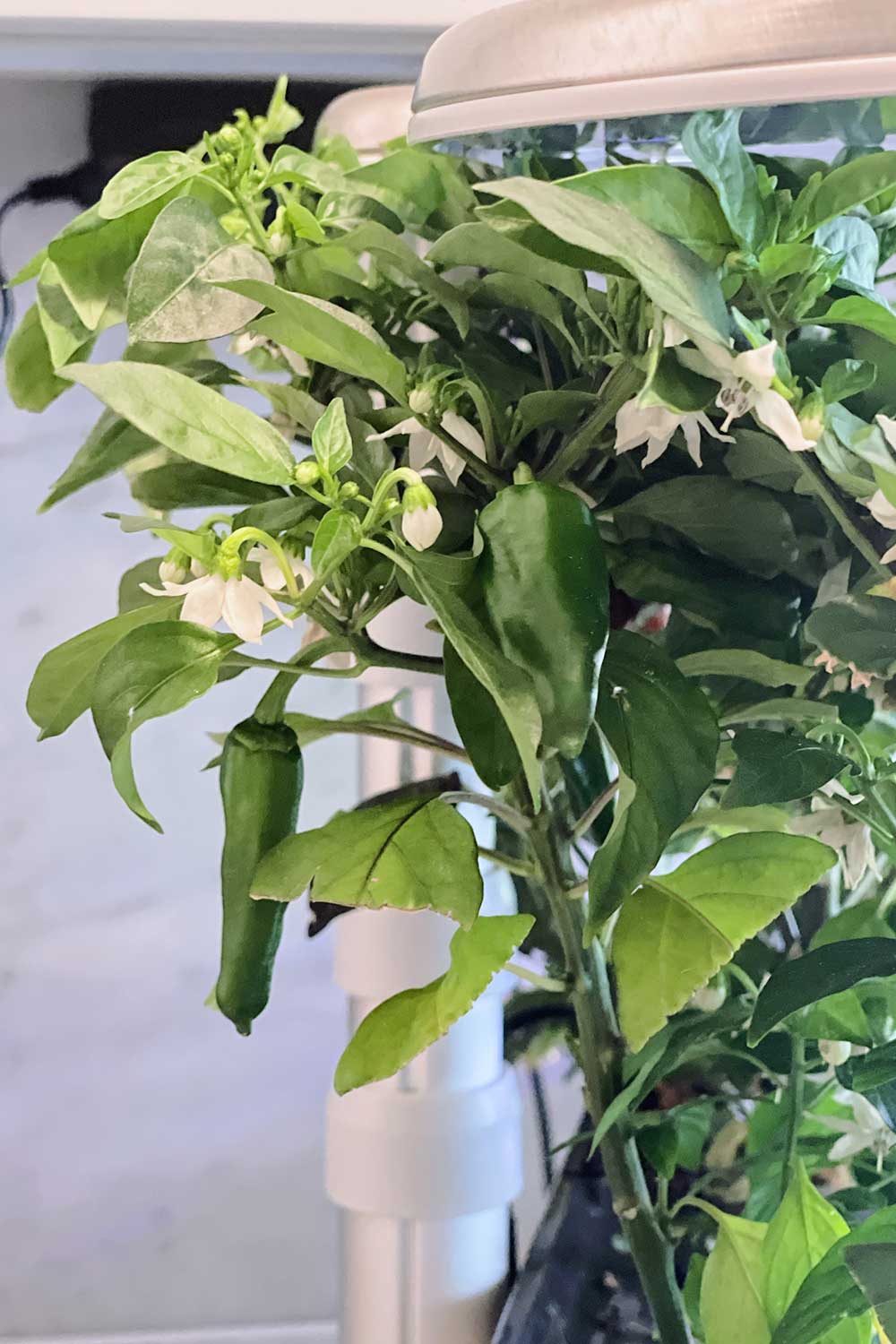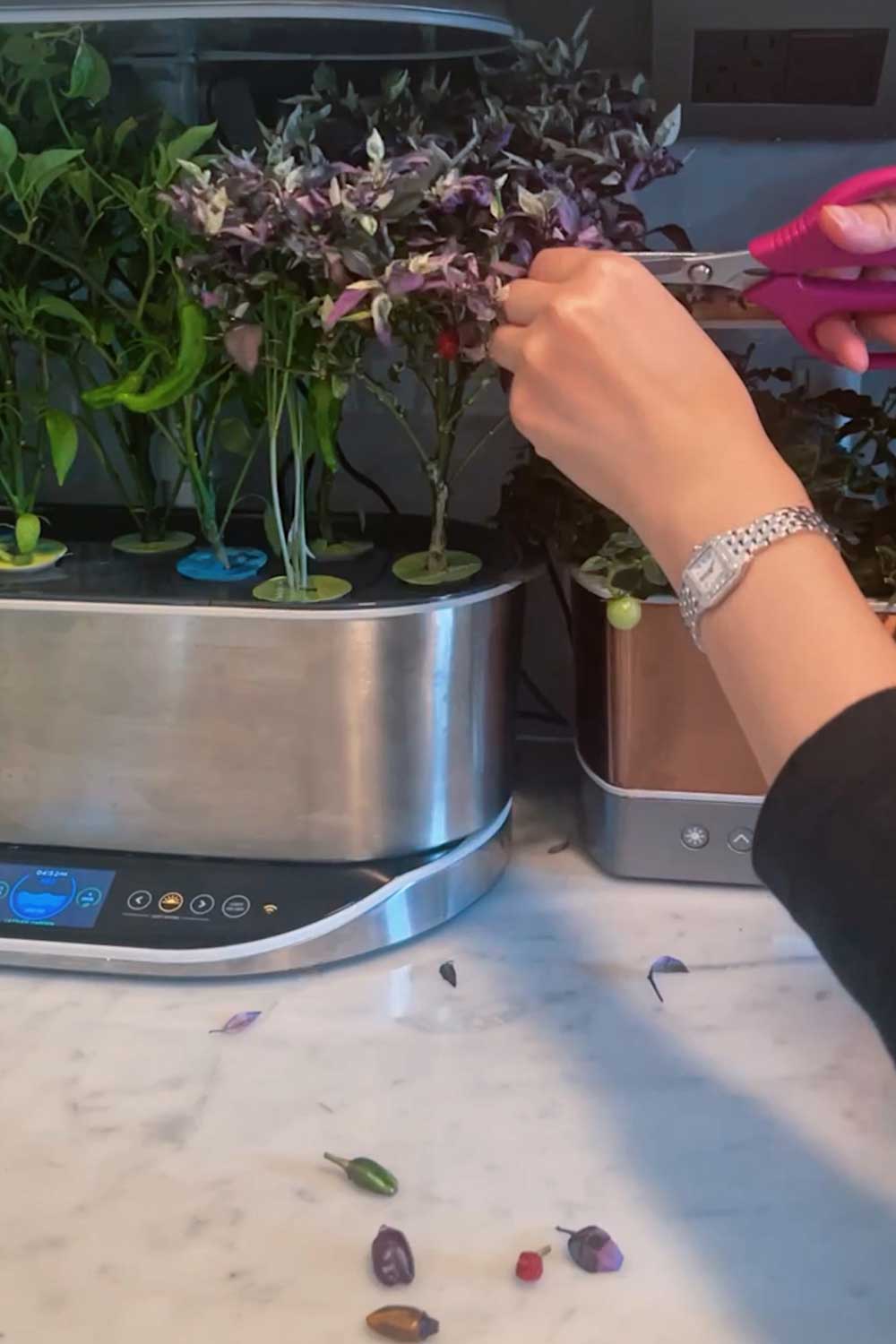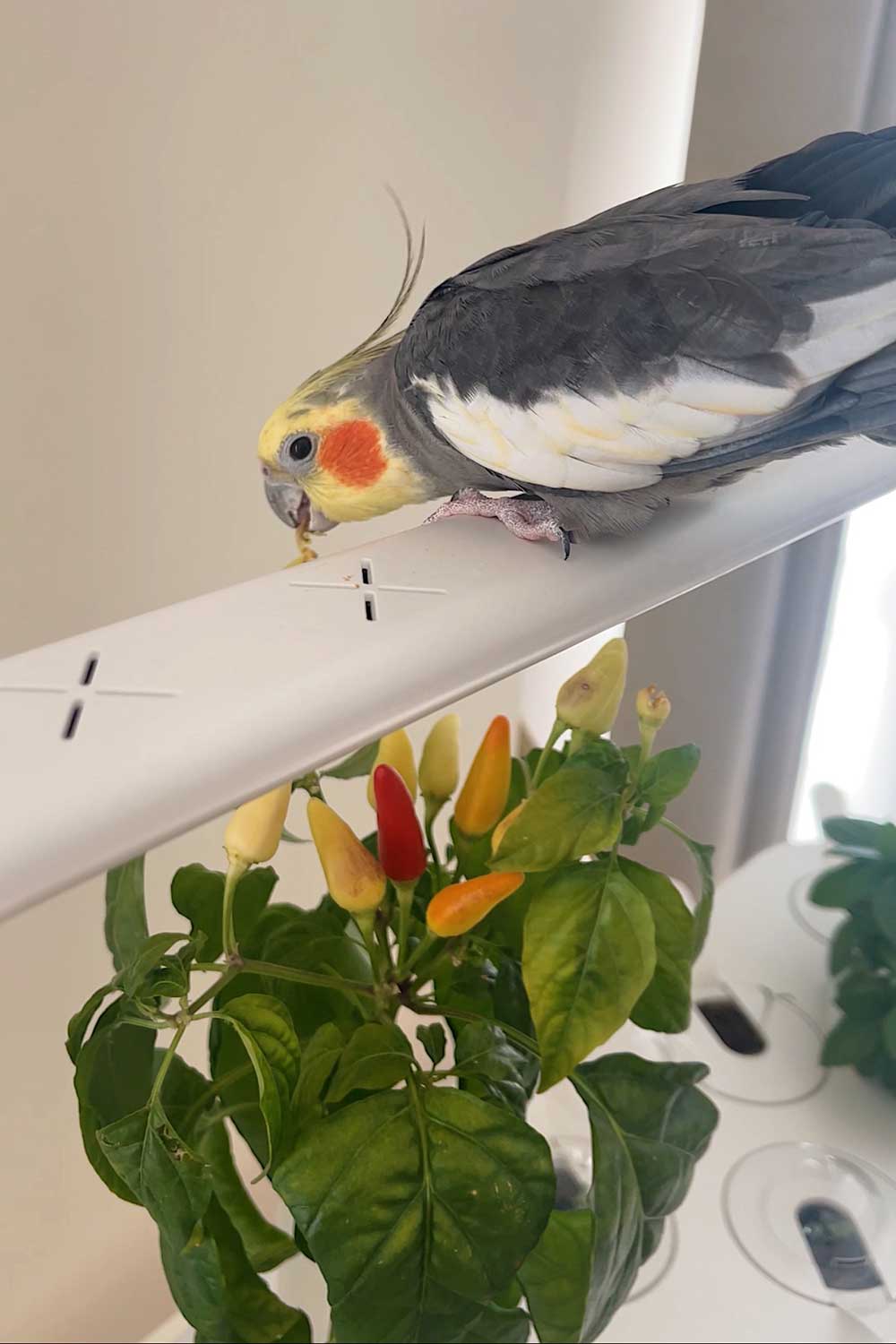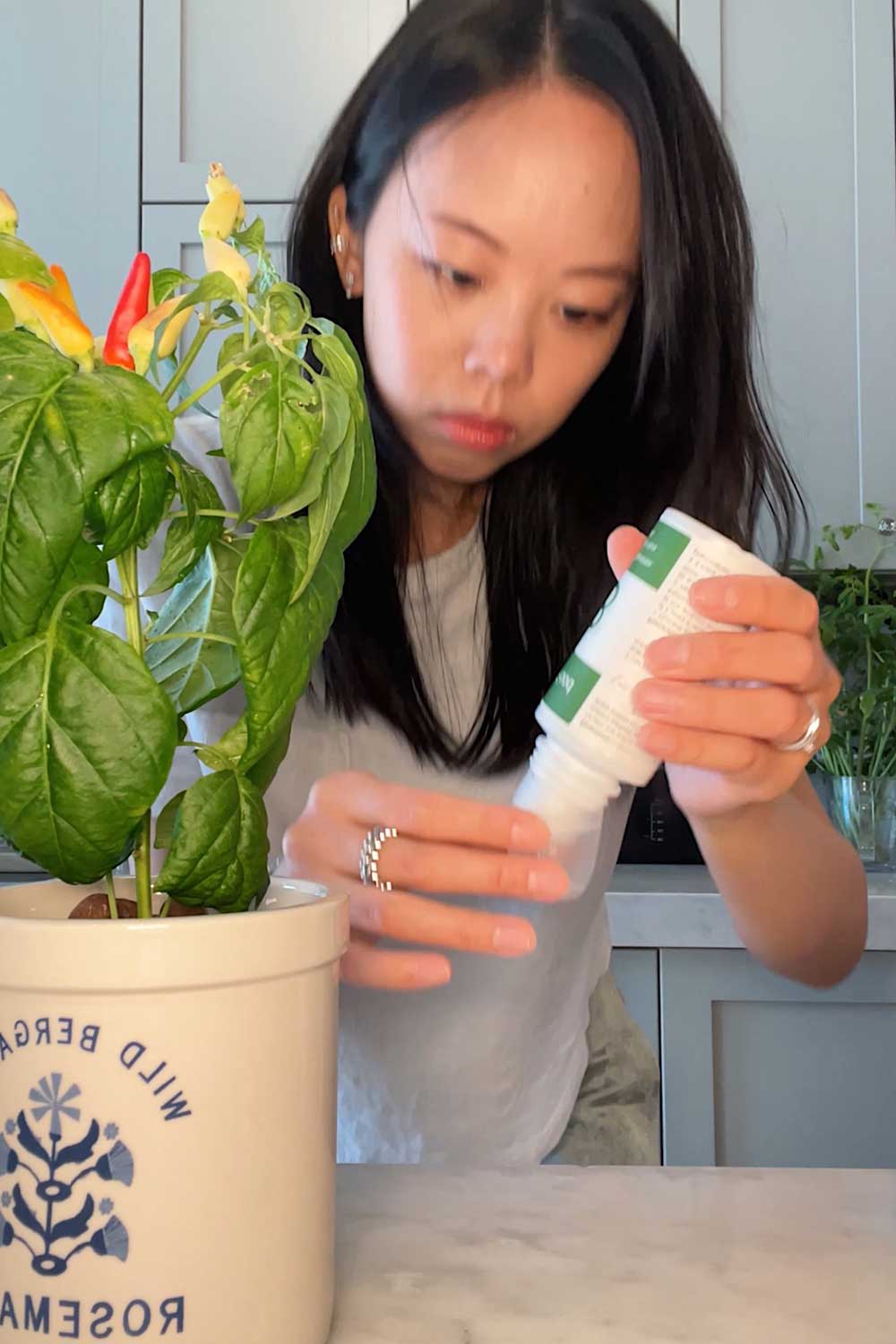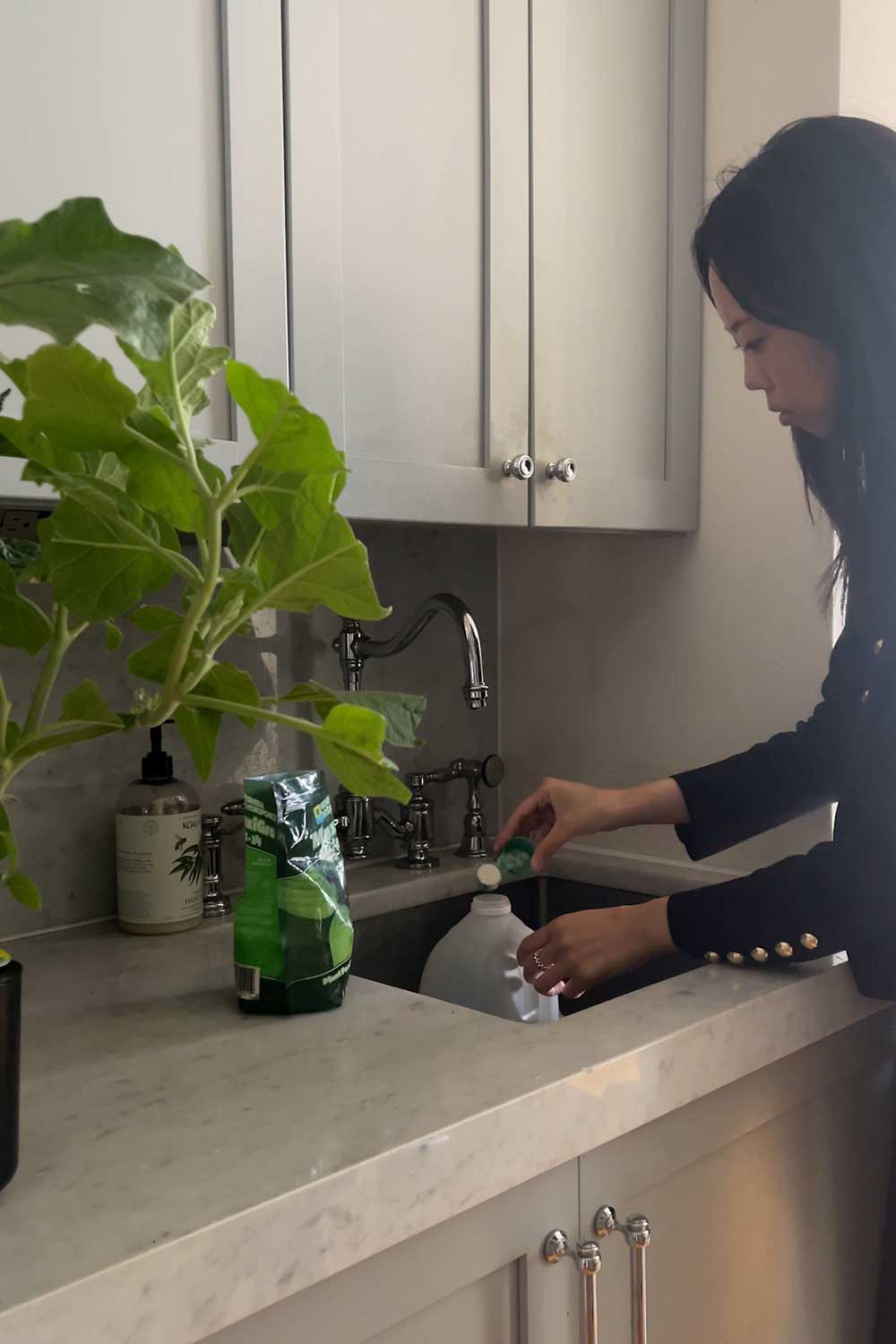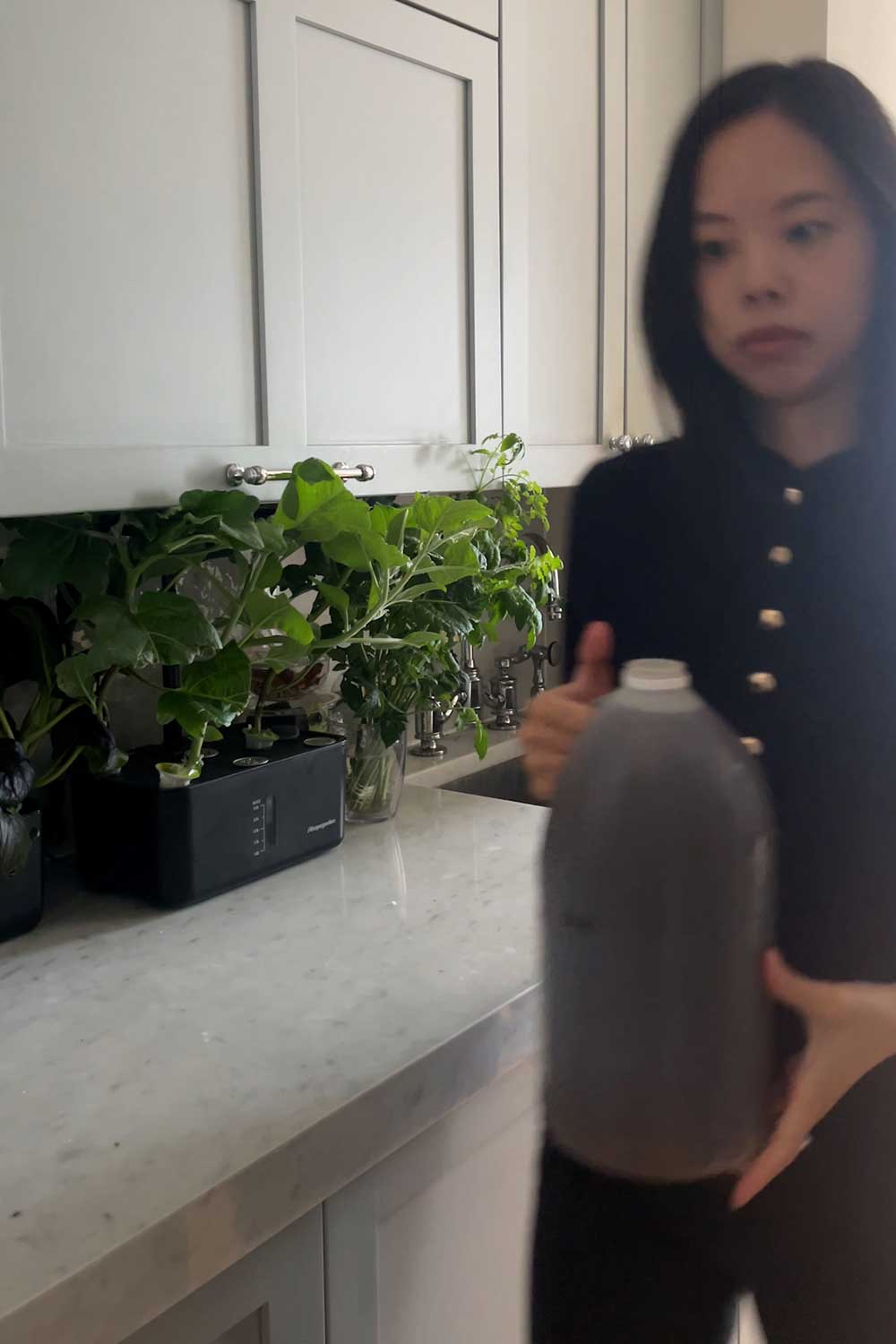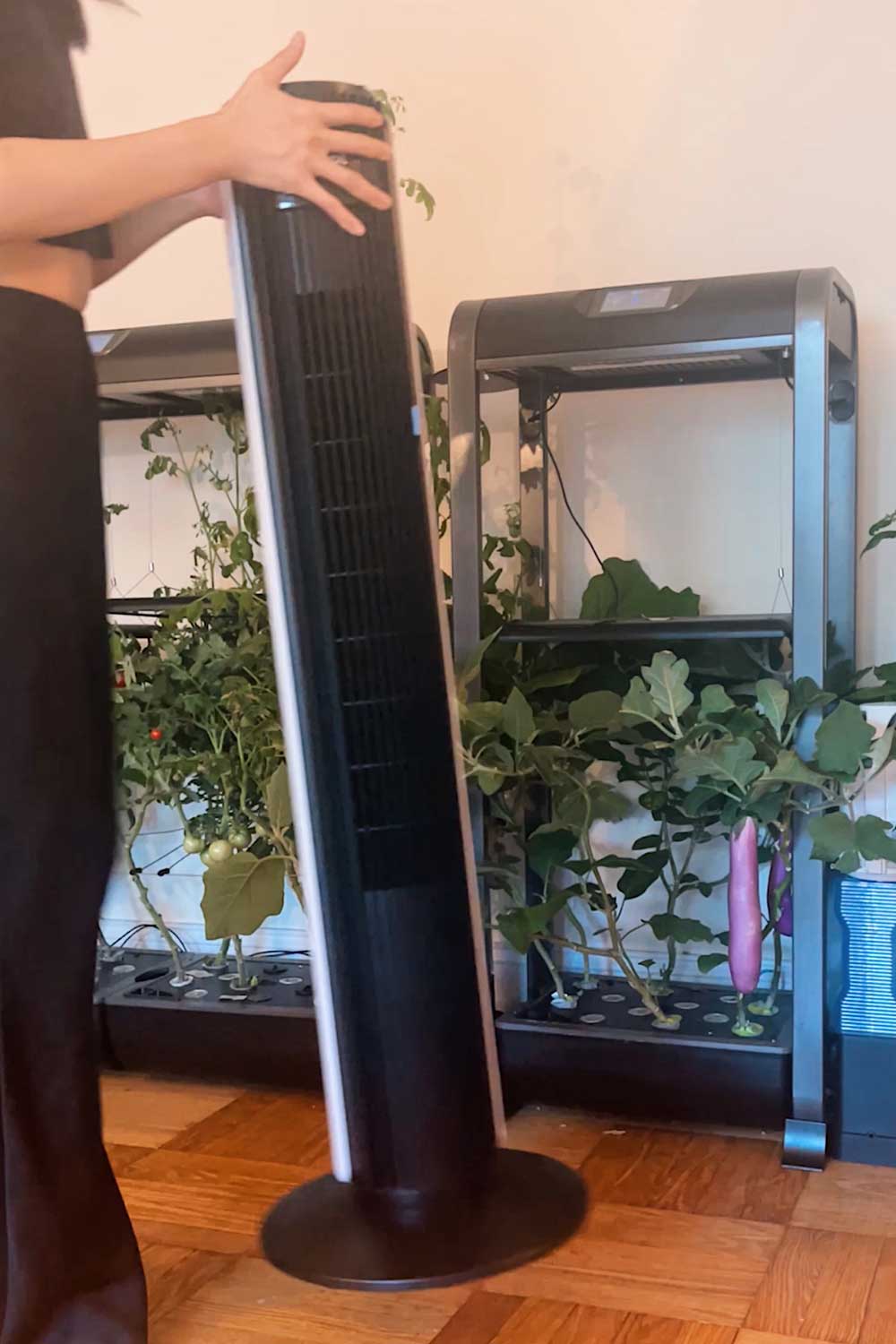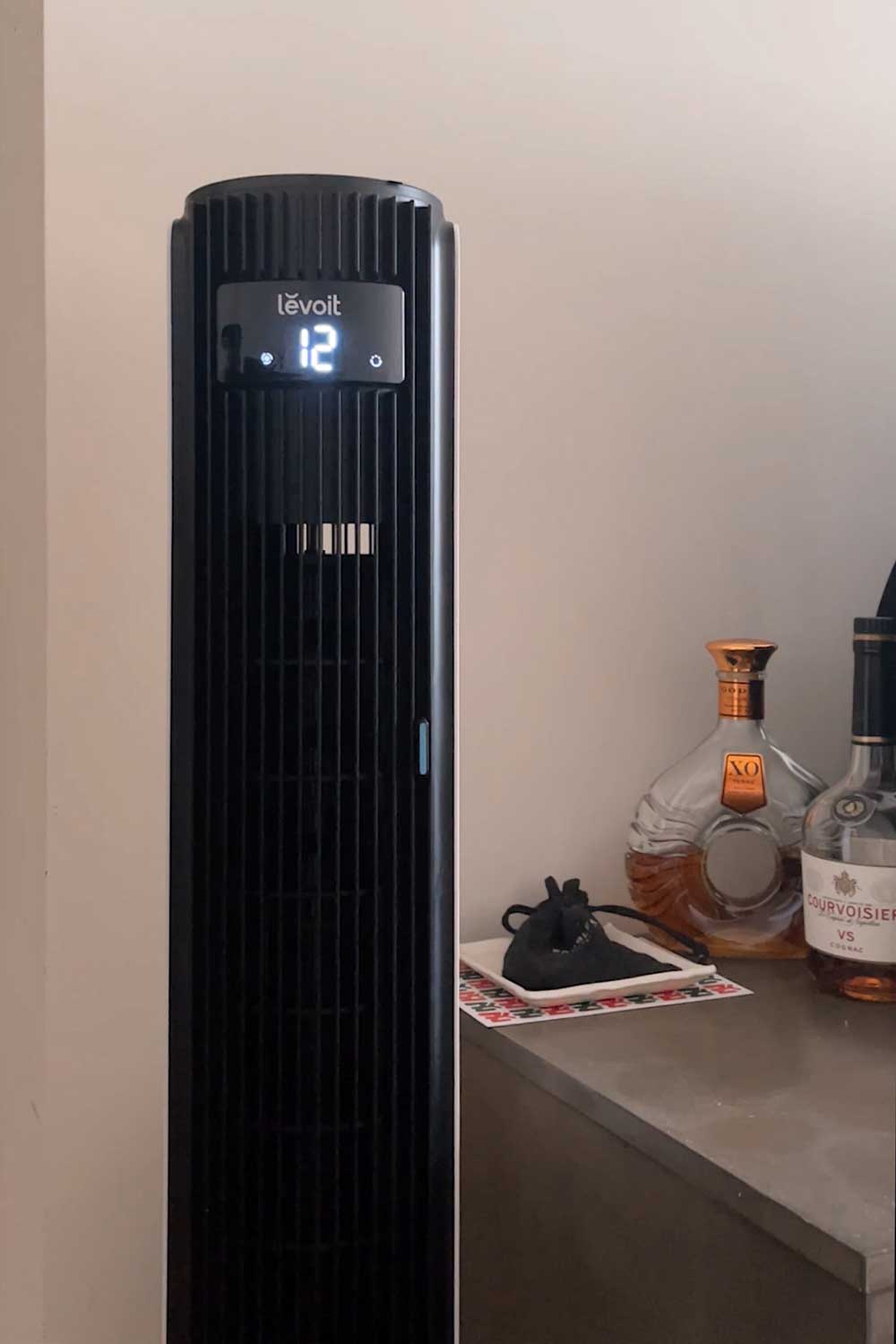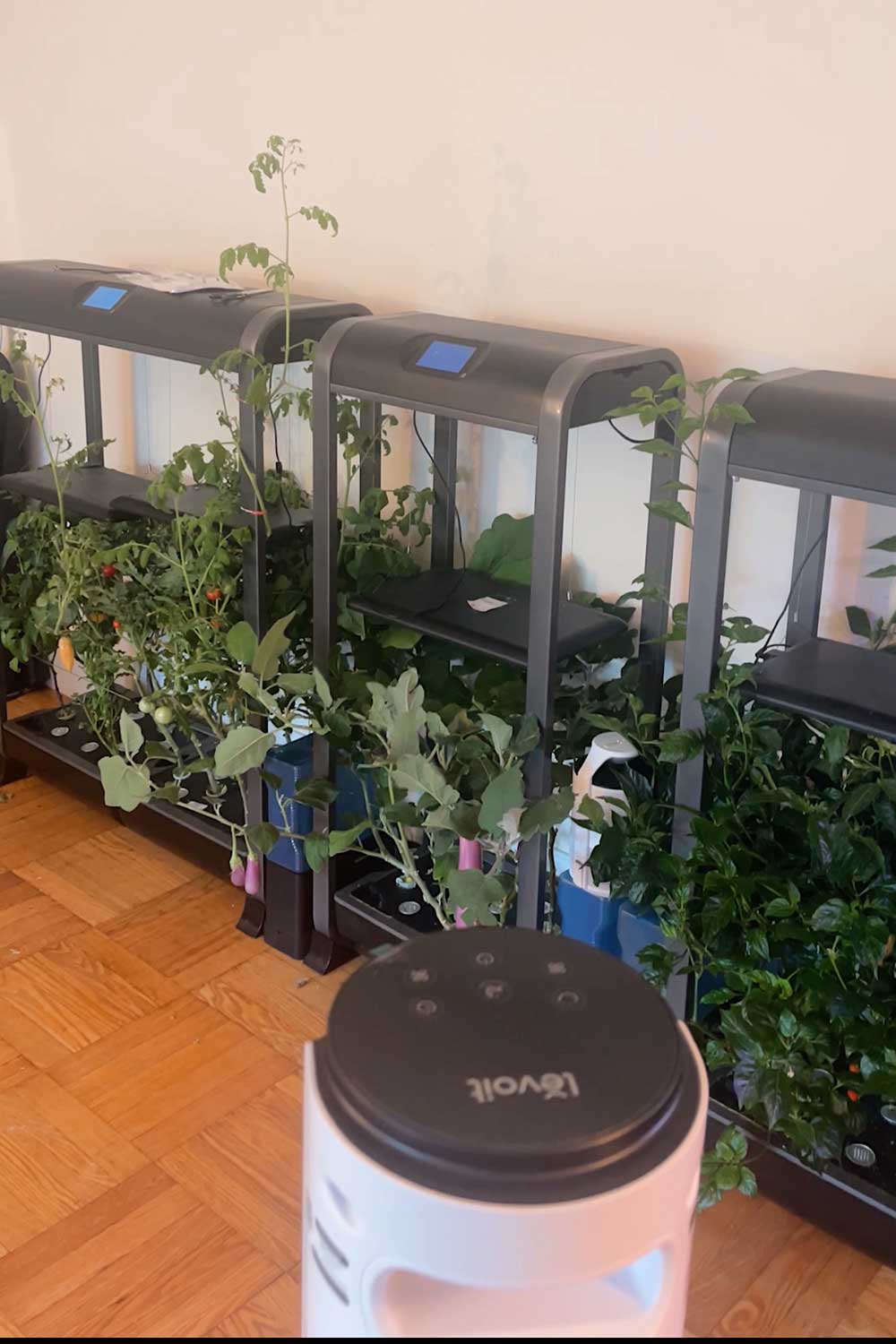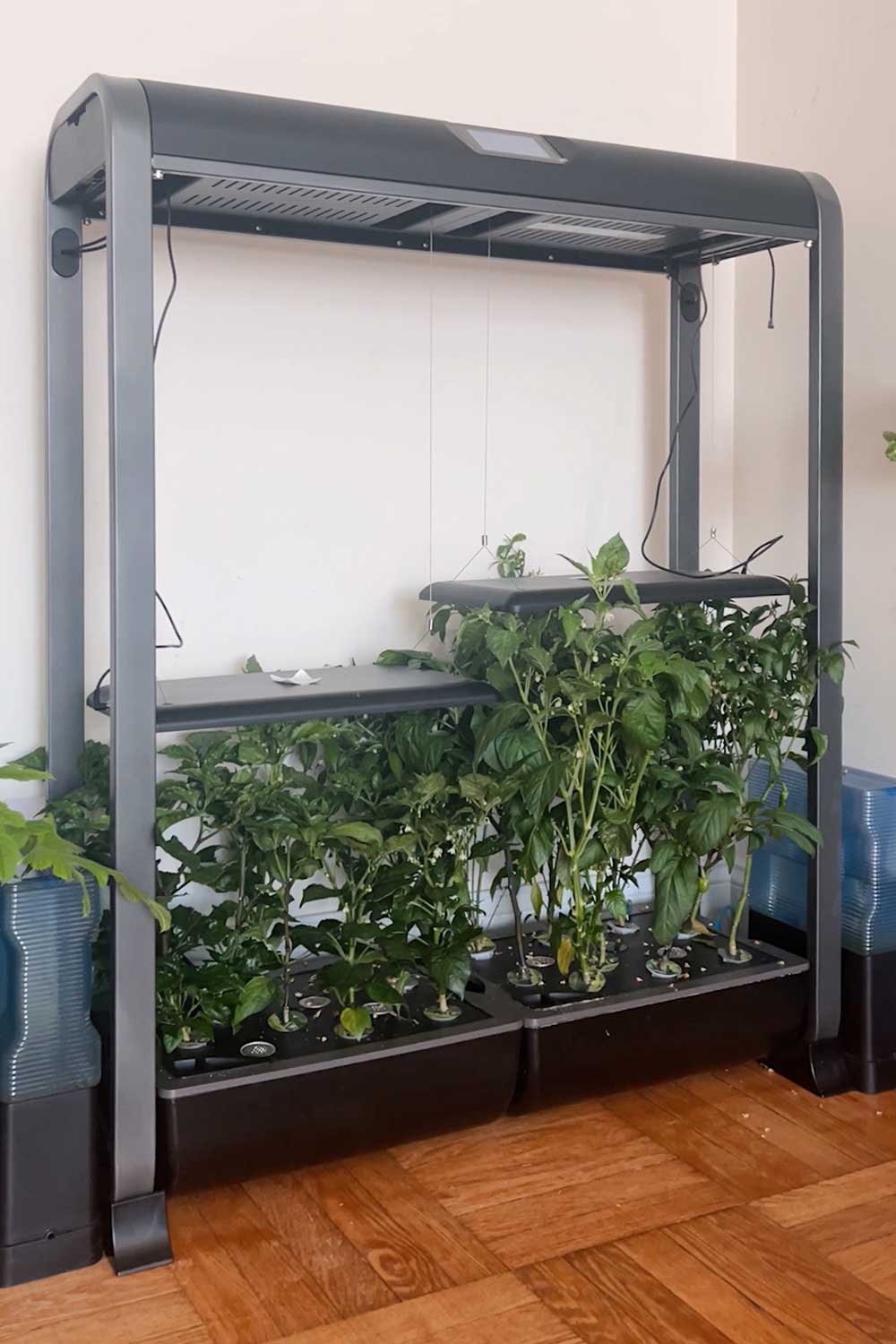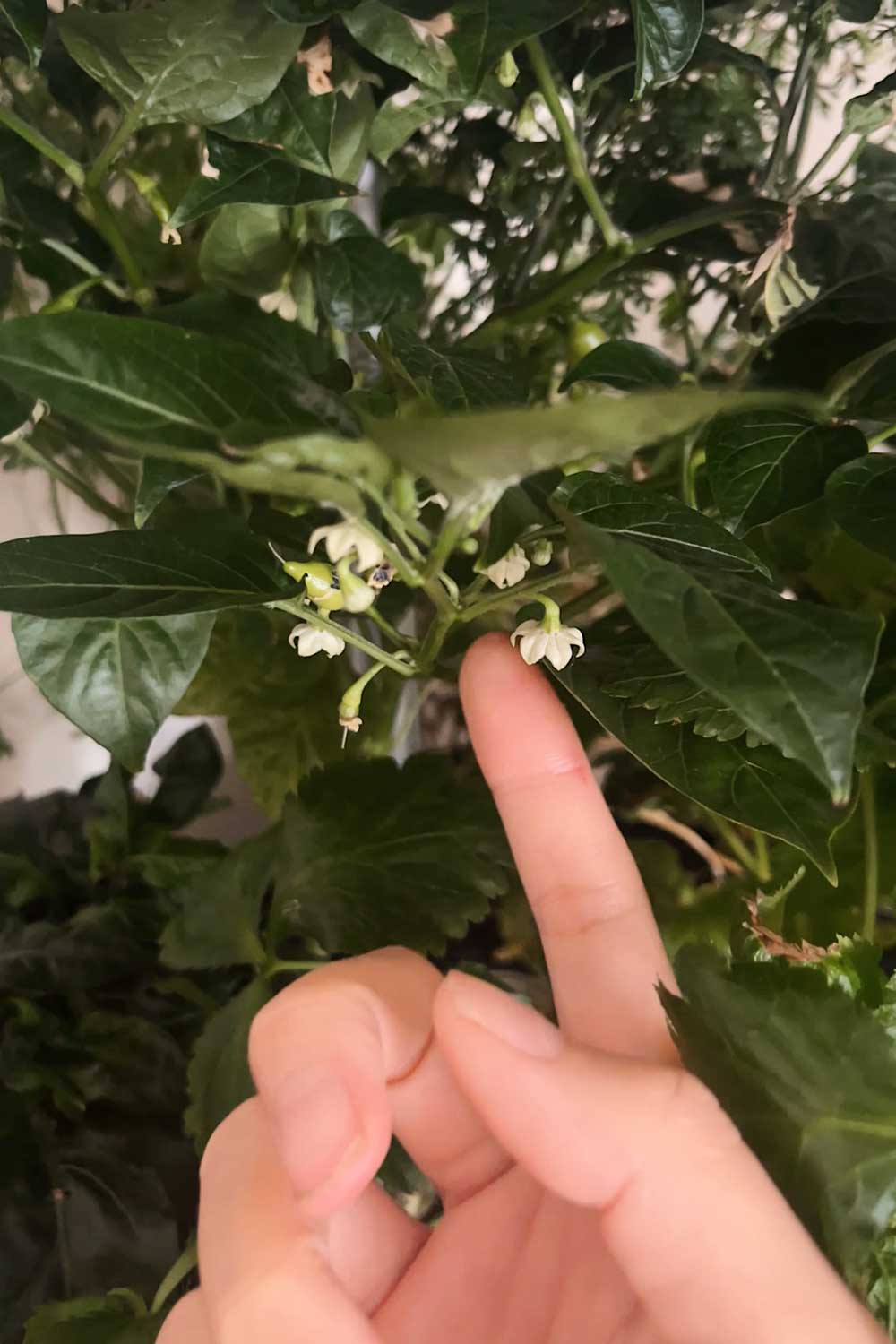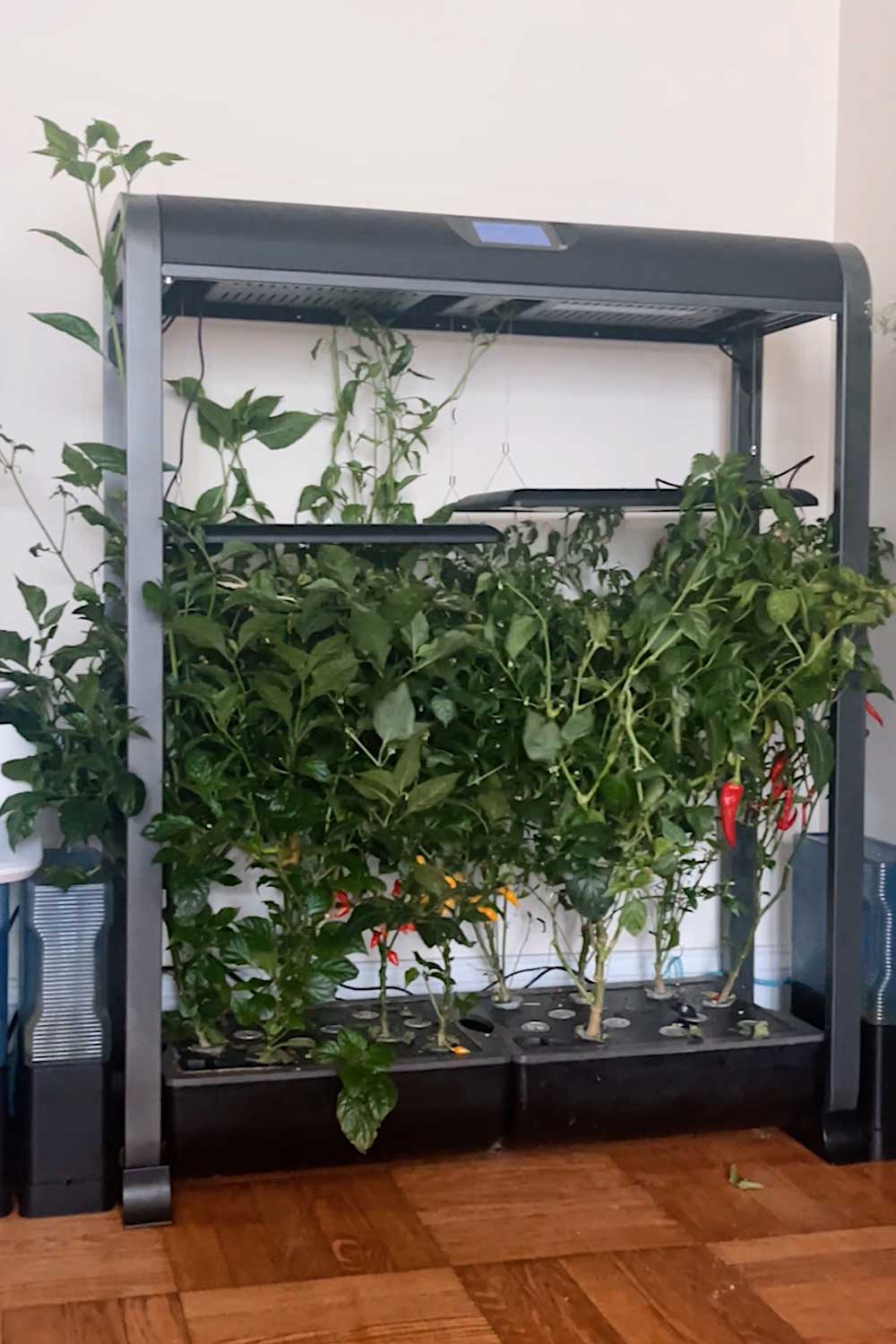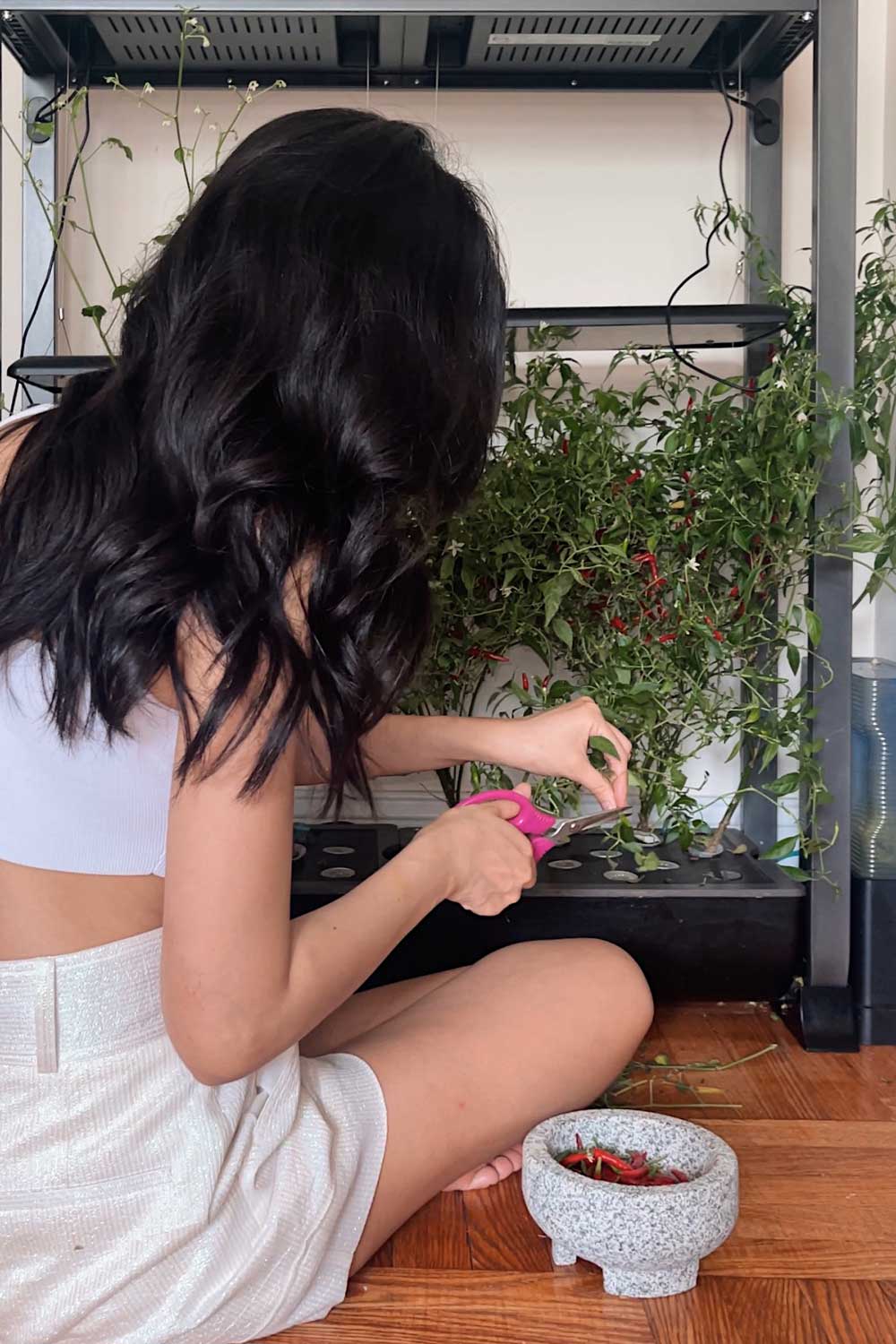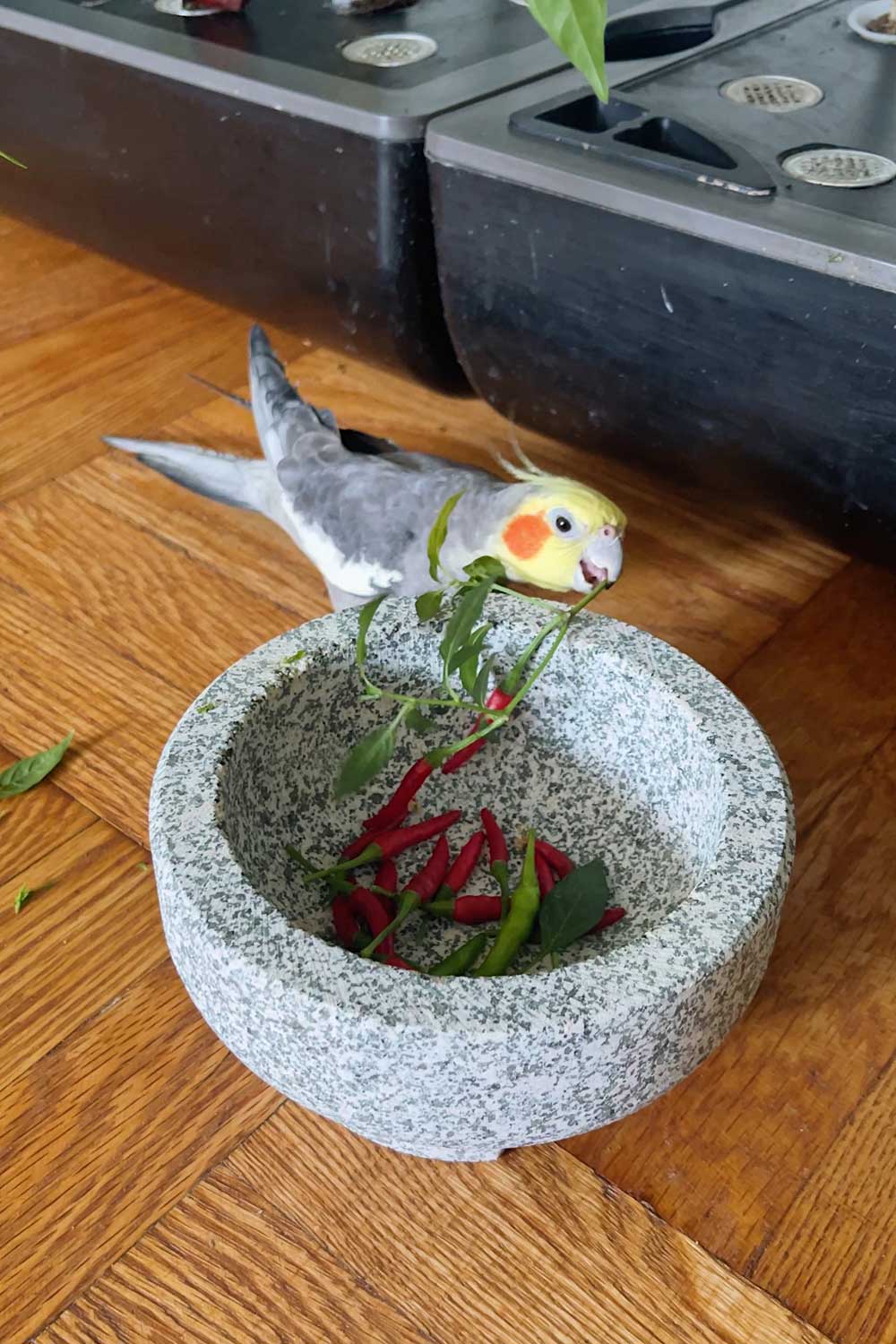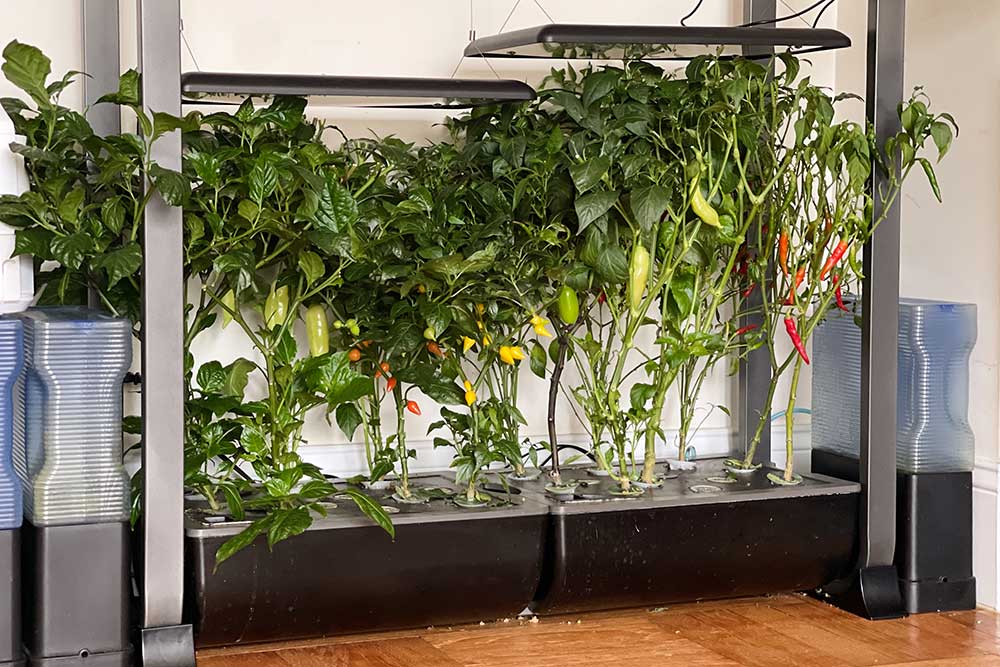
How to Grow Peppers Indoors
I love growing peppers.
There are so many varieties of peppers you simply can’t get your hands on unless you grow them yourself!
So, that’s exactly what I started to do… and all from inside the comfort of my apartment!
I got a couple questions from people who had difficulty getting peppers to grow inside their hydroponic gardens, so I thought I’d put together this guide.
Here’s my best tips for growing peppers indoors!
Hydroponic Gardening
I grow everything inside my apartment via hydroponics.
This water-based method of gardening has lots of advantages over traditional soil gardening, especially when growing indoors.
Space Efficiency
Hydroponic systems are typically compact, making them great for apartments and small spaces.
Small machines have built-in LED lights so they can be set up pretty much anywhere, no outdoor space required!
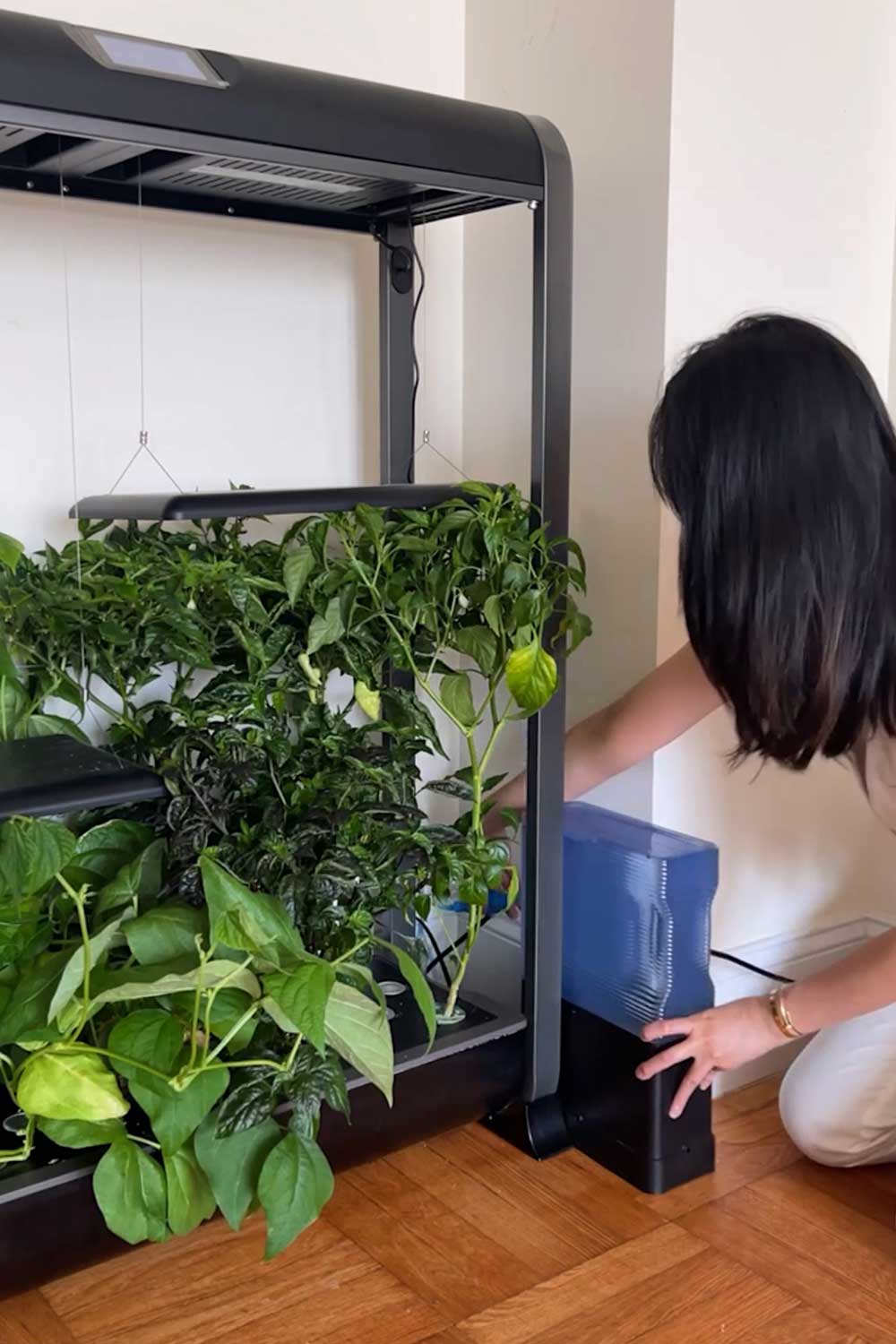
Water Conservation
Hydroponic grow systems use 90% less water than soil gardening.
Inside the system, water is re-circulated via pump, allowing it to be more efficiently absorbed by plants.
Faster Growth
Plants grown hydroponically often mature faster than plants grown in soil, thanks to direct access to nutrients and controlled, optimal growing conditions.
Year Round Harvests
Hydroponic gardens can be run indoors year round, so you can get fresh veggies even in the dead of winter!
Cleaner Gardening
And lastly (but most importantly to me!) hydroponics dramatically cuts down on pests.
I hate bugs and growing indoors without soil eliminates most pest issues.
While hydroponics isn’t guaranteed to be bug free, if you’re careful and control your indoor growing environment, you shouldn’t see bugs.
Tips for Growing Peppers Indoors
1. Pick the Right Indoor Garden Systems
If you’re a beginner I recommend picking up a machine like the Aerogarden – everything is already assembled, optimized, and neatly designed in a sleek all-in-one machine.
You can DIY your own hydroponic set up too.
For a basic system, you’ll need a grow tent, LED lights, a 5 gallon tote, air pump, timer and tubing. There are different hydroponic sub-methods which I cover in this post.
But if you’re just starting out using an indoor garden machine will make the process of growing peppers much simpler and more efficient.
it’s a little more work, but you can grow peppers in medium-sized, countertop machines too. shishitos, jigsaw peppers and red chilis
I have indoor gardens from all different brands – you can find my complete set up here.
For growing pepper plants, which can easily grow 2-3 feet tall, I recommend a medium to large sized machine, like:
- Aerogarden Harvest XL (18″ height capacity)
- Aerogarden Bounty (24″ height capacity)
- Letpot LPH Max 21 (19.5″ height capacity)
- Aerogarden Farm XL (36″ height capacity)
- Lettuce Grow (vertical tower)
I typically grow all my peppers in my Aerogarden Farms.
I have a wall of farm 12xl and 24xls that have strong 60W lights and 3 feet of grow height, both of which are helpful for growing peppers.
Aerogarden Discount Code
Use SSG15 for 15% off any order of $50+
2. Choose the Right Pepper Varieties
There are lots of different types of peppers:
- Ornamental peppers
- Sweet peppers
- Hot peppers
- Super hot peppers
All of these can be grown indoors, but you’ll want to choose compact varieties that will fit within the confines of an indoor space.
If you’re starting out, ornamental peppers tend to be easiest to grow (out of all the pepper types)!
Aerogarden, Click & Grow and Lettuce Grow all sell pepper varieties that they’ve internally tested and optimized for indoor gardens.
They have lots of fun pepper varieties, like shishitos, ghost peppers and jalapeños.
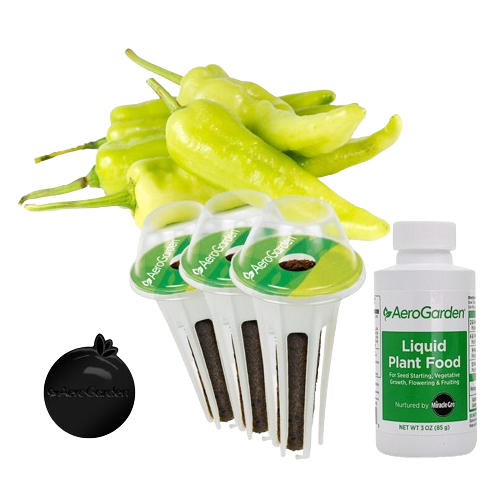
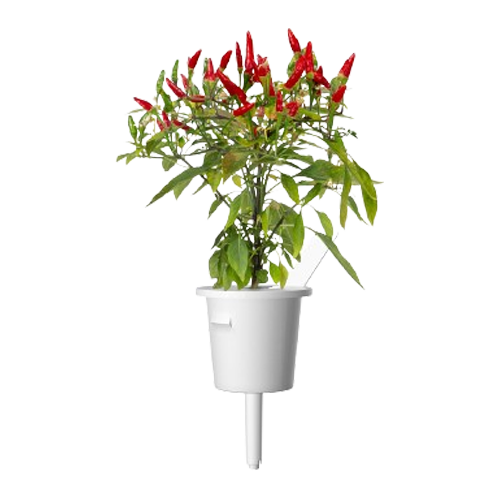
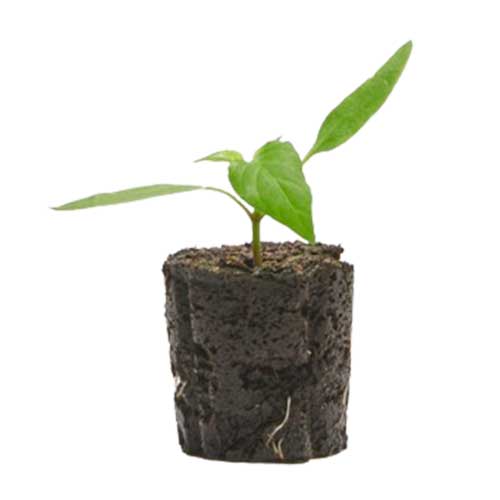
lots of pepper varieties to choose from and they’ve all already been tested + vetted!
You can also use your own seeds, if you like to experiment.
I buy my seeds online and look for keywords in the plant descriptions like “container friendly”, “compact” or “bush”.
A couple beginner friendly pepper varieties that I’d recommend include
- Thai birds eye chilis (super hot + beginner friendly)
- Biquinho chili peppers (tiny, colorful + sweet, without much heat)
- Lemon jalapeños (classic with a colorful twist!)
- Pizza My Heart (a compact sweet pepper variety)
Read more: My Favorite Places to Buy Heirloom Seeds
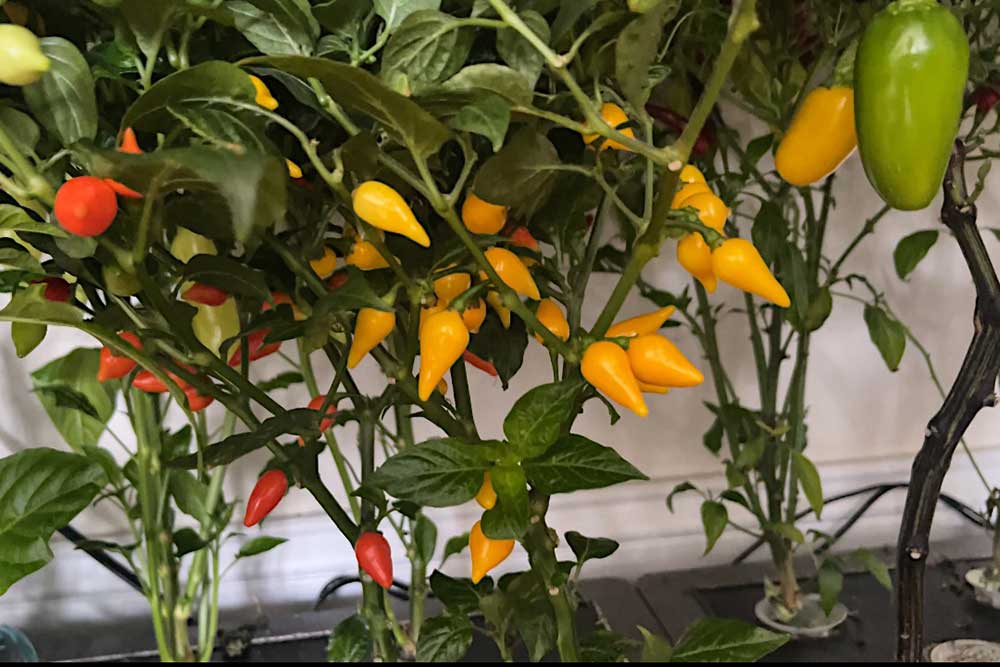
growing a mix of colorful peppers in my Farm: Thai chilis, Brazilian biquinhos and New Mexican Lemon Jalapenos
3. Seed Starting
Pepper seeds can take 2 weeks to germinate.
I often start seeds directly in my indoor gardens, but if you’re having difficulty you can start seeds in a damp towel using the paper towel method.
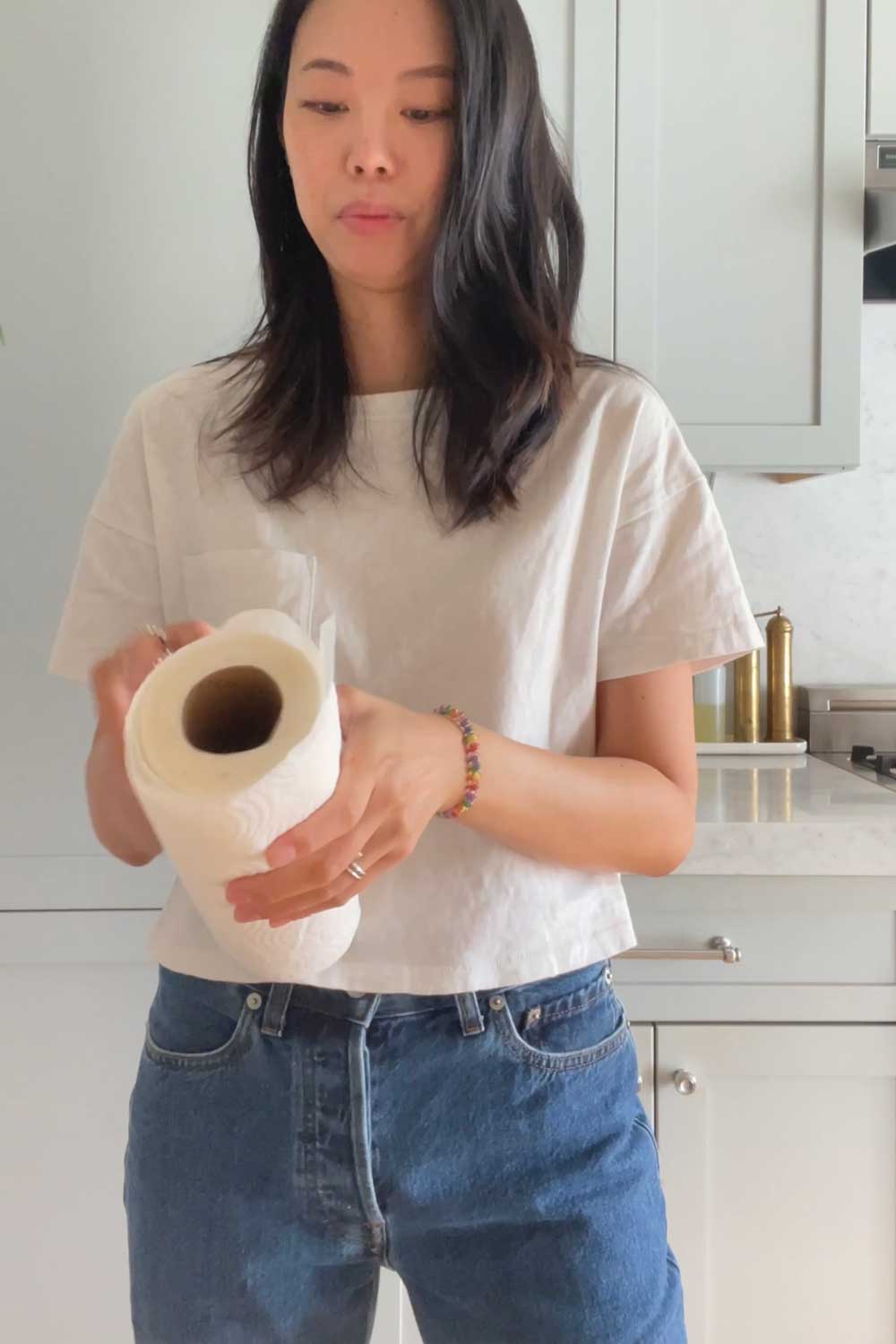
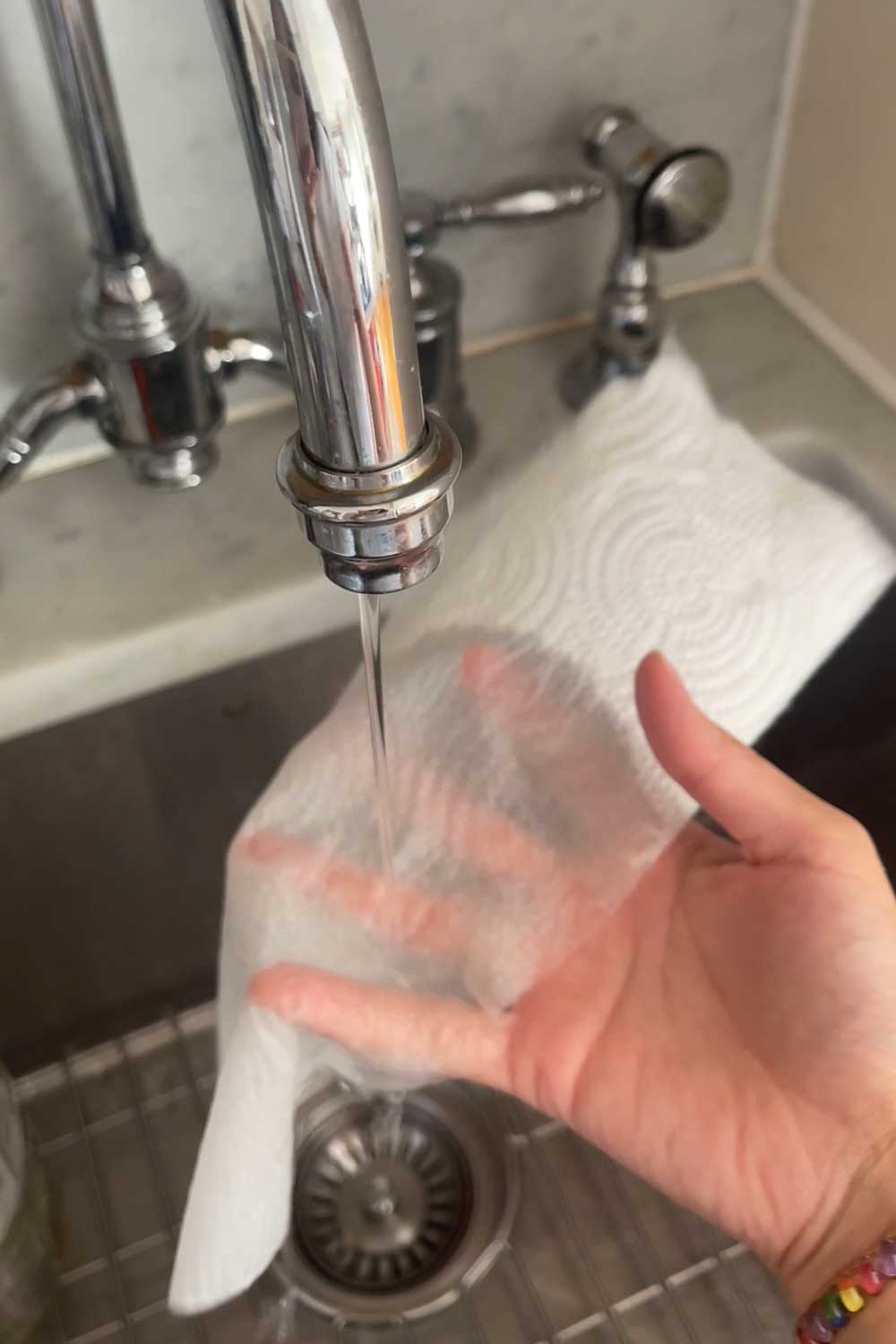
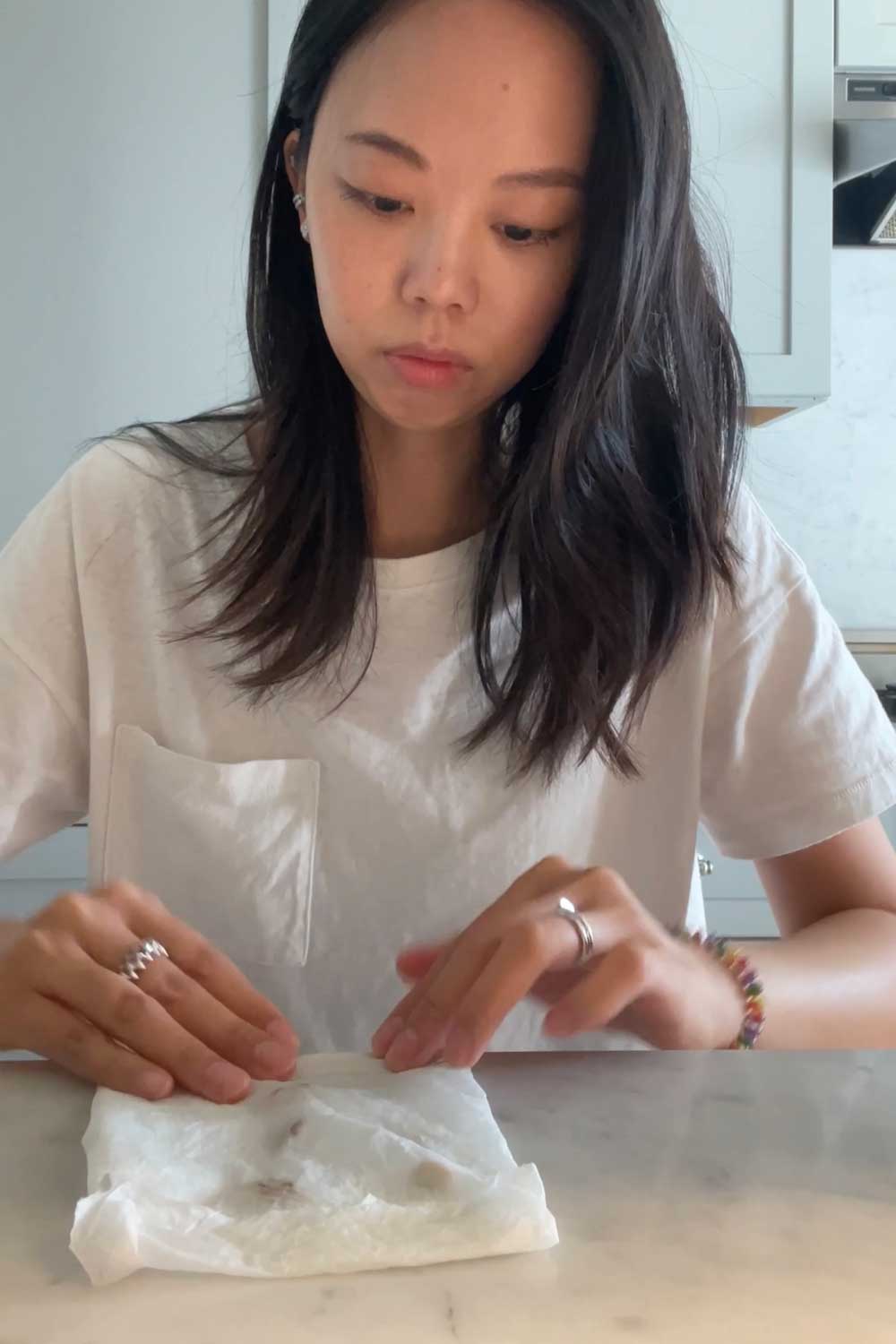
the paper towel method works well if you’re using old or finicky seeds
4. Provide Enough Space
Once your pepper plants have germinated, make sure to give them adequate room.
I recommend planting 1 pepper plant for every 3 spaces.
Most indoor gardens come with tons of holes in the grow deck, so cover any unused holes with spacers.
5. Light Schedule
Peppers love the sun.
For an indoor garden, you’ll want to give them at least 16 hours of light each day.
Start out by keeping the lights low, as close to the seed pods as possible.
Once the seeds germinate, gradually move the lights up on pace with the plants growth so that they form strong stems.
6. Add Nutrients
Hydroponic systems rely on nutrient-rich water to feed plants.
Once the seedlings have germinated, add liquid nutrients. I recommend Aerogarden’s liquid plant when you’re starting out.
Maxigro is a more economical option, but comes in dry powder and will need to be mixed.
I also recommend adding a bloom fertilizer to support strong flower formation.
7. Maintain a Regular Schedule
I typically add nutrition every 1-2 weeks (depending on the plant growth stage), and will tweak the fertilizer formula as necessary.
If your plants show signs of stress (yellow leaves, drooping, lots of leaves dropping), something is up with the nutrient mix.
Test the reservoir’s pH to make sure the nutrient mix is optimal.
L: liquid nutrients are easier to use for small gardens. Right: mixing up dry nutrients to use in bulk
Changing out your water can also help.
Rinsing and refilling the grow bowl every other feeding helps to ensure the plants are getting clean, healthy water.
Always use cool unfiltered water and add nutrients to the new water.
Pepper plants can drink up quite a bit of water when they’re full grown, so I also use these extra tanks.
They essentially double the capacity of the reservoir so that I only have to refill nutrient water half as often!
8. Pollination
Unlike outdoor gardens where pollinators like bees can freely visit, indoor plants require a bit more assistance with pollination.
I find that adding a fan helps significantly.
I like this large room fan that’s quiet and does double duty keeping both my apt cool and my plants pollinated.
If flowers are dropping and you’re having low pollination rates, try manually pollinating your peppers.
adding a room fan made a huge difference in my plants’ health + pollination rates
Gently shake the plants so the interior pollen gets distributed.
Or, use a paintbrush, vibrating toothbrush or your finger to transfer pollen manually.
If your flowers are dropping, you’ll want to add a bloom fertilizer to help the plant push out a subsequent wave of flowers.
Use a small scoop (follow the manufacturer directions) in addition to the regular base nutrients and you’ll see a huge difference in flower growth.
pepper plants in the flowering stage / manually pollinating / success! lots of peppers forming
9. Pruning
Pepper plants can easily grow to huge bushes.
As they get larger, the lower leaves can yellow or fall off.
Pruning regularly helps keep the plant healthy and refocus the plant’s energy to producing pepper fruit.
If you find that your pepper plants grow tall and fork into a Y shape, they may need some support as they grow upward.
You can add a trellis to help support any heavier fruit development.
I like Aerogarden because their Bounty and Farm models come with trellis accessories.
pruning + harvesting at the same time. if the plants get unruly, I harvest all the peppers first then go in and trim back a good third
10. Harvest
Most peppers start out green and ripen to red once they’re mature.
Harvest them regularly to encourage the plant to keep producing fruit. A well maintained pepper plant can keep producing fruit for years so let them go wild!
I’ve gotten harvest after harvest from my indoor peppers.
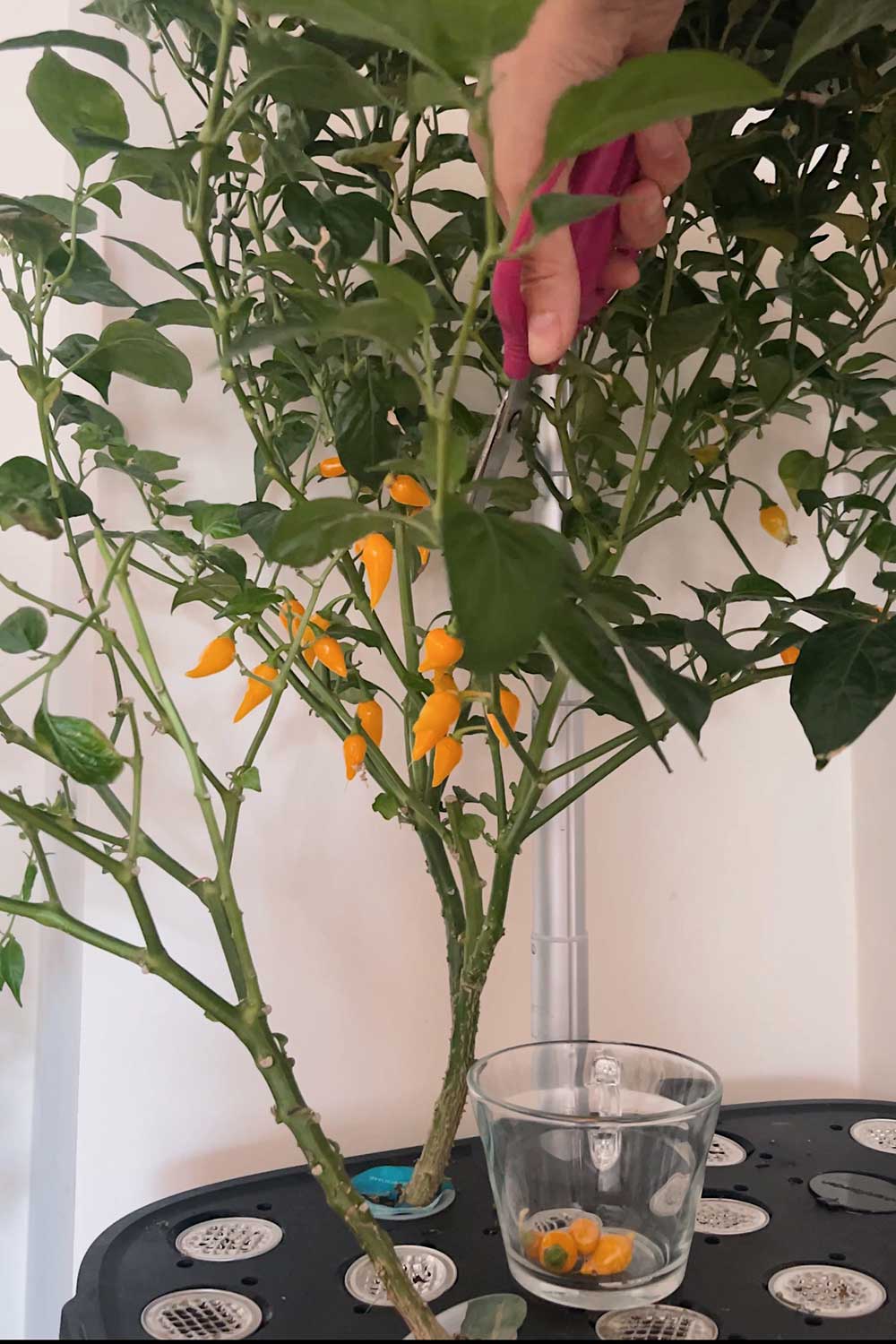
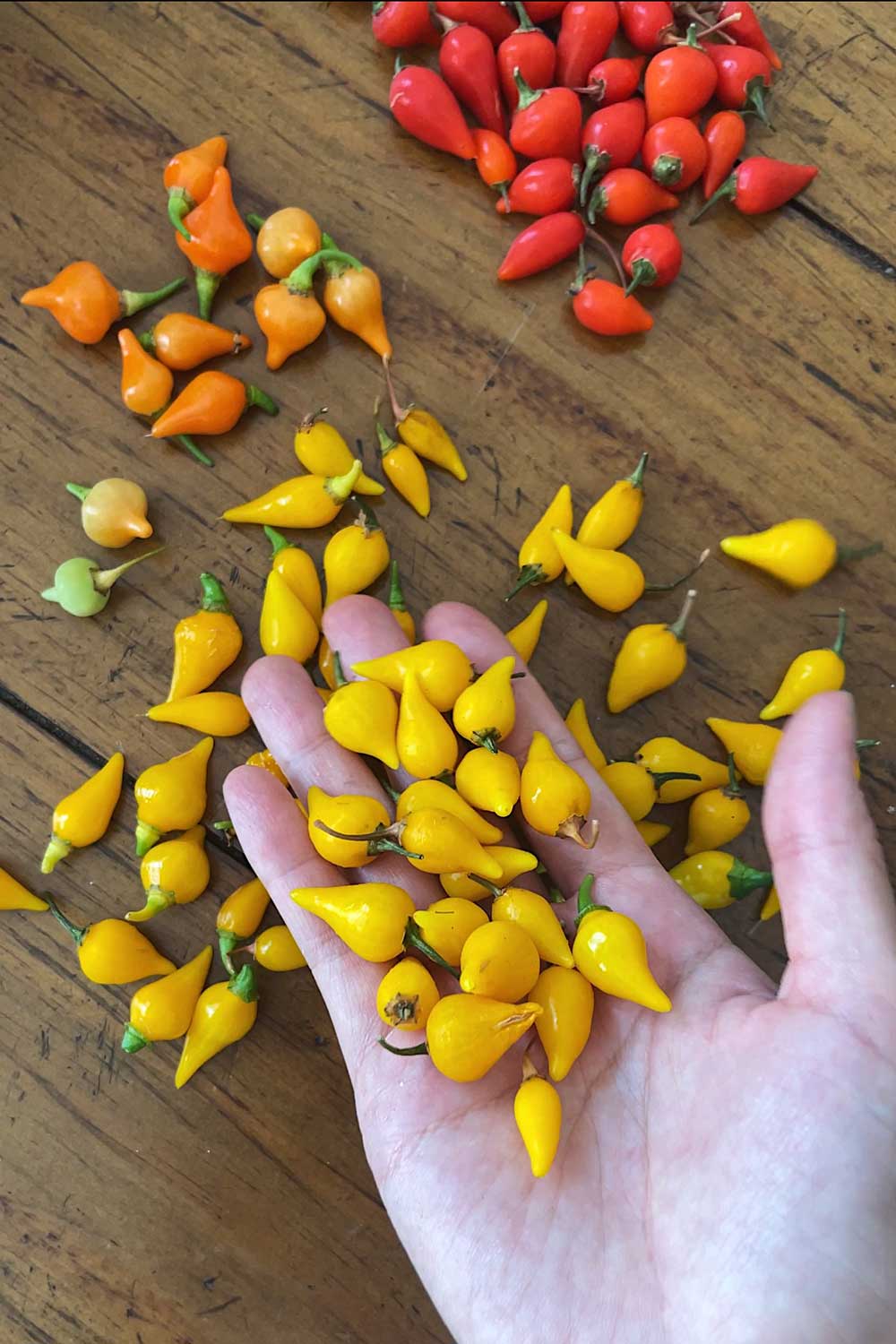
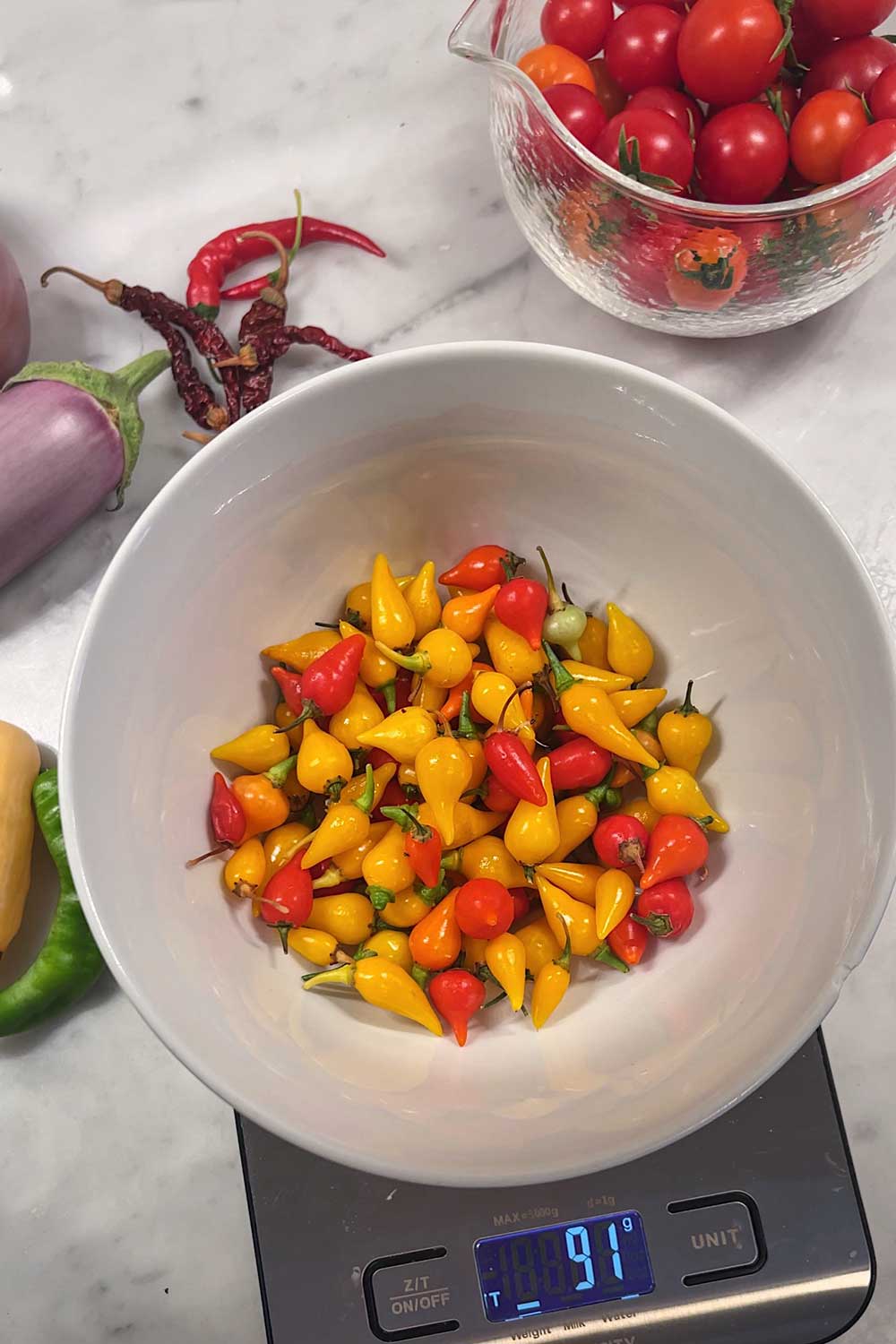
harvesting + weighing a batch of red and yellow biquinho peppers
Follow me on
